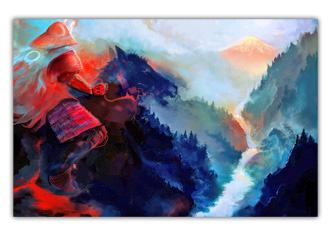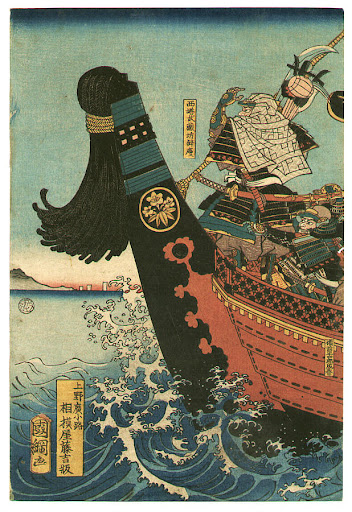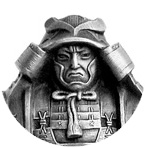Come and take him! (Dan-no-Ura)
Samurai: Ascension
-

With the first rays of the sun on March 24, 1185 Yoshitsune led the 500-strong Minamoto squadron towards the waiting Taira fleet. He delivered orders from the flagship’s deck, dressed in a menacing horned helmet and black armor. Had it been a land battle, Yoshitsune would have been confident. But the sea was unpredictable; undercurrents and reefs might have divided his squadron or even destroy the Minamoto’s superior fleet. The Taira knew this and it was exactly why they had chosen this bay. Their strategy was to feign retreat and slip past the submerged reefs which the pursuing Minamoto ships would crash into, then attack them. It was a dangerous plan, but it was their only hope. If they succeeded, it would make a drastic difference in the war because the Minamoto warriors would drown under the weight of their armor.
In the beginning the Taira were lucky. They charged so quickly and violently they almost killed Yoshitsune. But ultimately, fate was not on the side of the Taira because the wind shifted and brought them closer to the Minamoto archers. The Taira rowers wore themselves out under the storm of arrows, which killed their helmsmen and sent them crashing into the reefs. On the other hand, the wind’s change of direction helped the Minamoto ships bypass the trap and intensify their assault.
The Taira were trapped. Some survivors fought back while the rest circled the emperor’s flagship to die at his side. Yoshitsune’s fleet was studded with arrows and engulfed in flames but pushed forward. As Yoshitsune deflected attacks with his sword, his eyes glowed under his steel mask resembling a predator about to lunge. The moment he had been waiting for had finally come; he was on the verge of avenging his family’s destruction.

Showdown at Dannoura by Utagawa KunitsunaRight then, Yoshitsune saw the Taira emperor, and his heart softened. The eight-year-old child was standing fearlessly on deck surrounded by his mother, her ladies-in-waiting, monks and bodyguards. Even though Yoshitsune hated Kiyomori, the little emperor’s grandfather, he knew that sacred imperial blood1 flowed in his veins. Spilling it would have been the greatest sin, incurring much bad karma. So Yoshitsune ordered his archers to stand down. He saluted the emperor and invited him onboard his ship. The little emperor didn’t respond, and the brave commander of his guard shouted to Yoshitsune, “Come and take him!
But there was no time. Yoshitsune’s bodyguard shot an arrow into the guard’s throat and he collapsed at the emperor’s feet, igniting a fierce battle. Corpses were everywhere and the deck was slippery with blood. Yoshitsune led the way, slicing through enemies like a tornado. Seeing that their last protectors were about to be killed, the young emperor and his mother jumped into the sea. Yoshitsune ordered his samurai to rescue them, but they were only able to save his mother who retained two of Japan’s imperial regalia.2 But the emperor was gone, and the entire nation grieved.
A little later Yoshitsune ordered the attack of the next Taira ship. He wanted to annihilate the entire enemy fleet. By nightfall he had stumbled into his brother’s headquarters drenched in blood and relayed the good news, “Everything which is not Minamoto is destroyed. Of Taira there is no more. The day of our vengeance and triumph has come, brother. Only several prisoners remain.”
“They shall die; this is their karma,” Yoritomo answered. The grim light of the sunset reflected in his eyes...
____________________________________
1 The imperial family was considered holy in Japan.
2 According to Japanese mythology, the supreme goddess Amaterasu gave her grandson, the first ruler of Japan, three treasures imbued with divine power: a sword, a bronze mirror, and a magatama (curved, comma-shaped bead made of jade,) which were believed to protect the country from the evil forces. According to Shinto concepts, as long as these were in emperor’s hands, the country will not perish. These three items became the regalia, or signs of imperial power. A ruler was only considered legitimate if he had them in his possession. This tradition was extremely important in terms of power succession. At the symbolic level the sword represented the supreme principle, God’s “body”, righteousness, and law. The mirror symbolized the celestial body, was a magic mediator between the world of humans and the world of gods, and a talisman. The jade bead offered protection from evil. Taken together, the three sacred regalia were considered tremendously powerful.Back to the Blog
This is a chapter from Samurai I: Ascension

